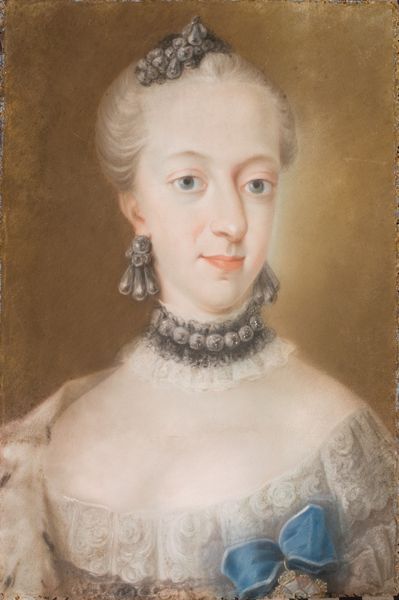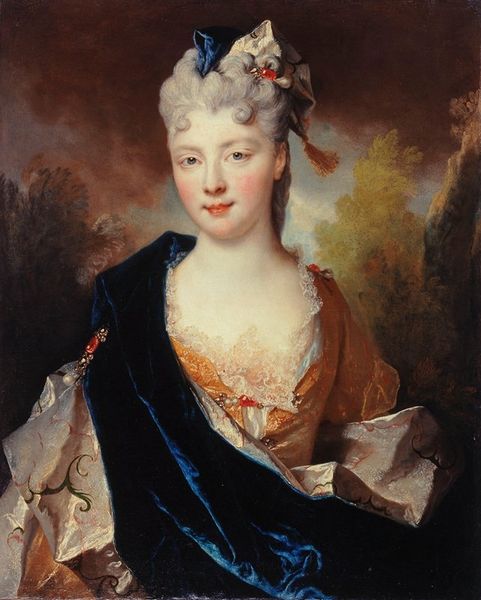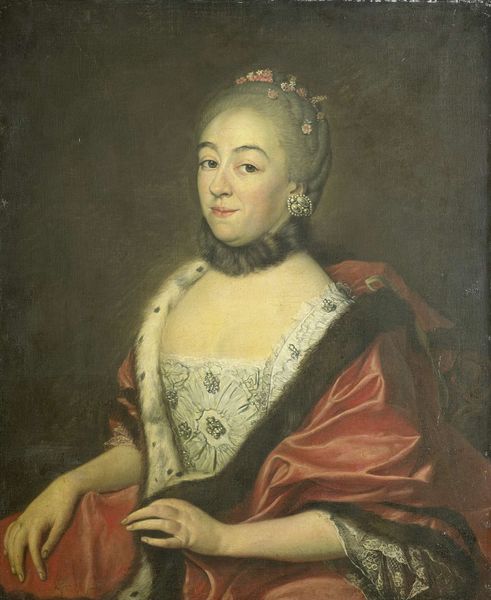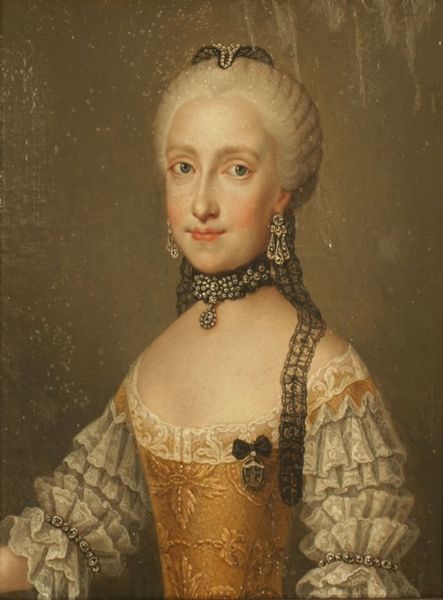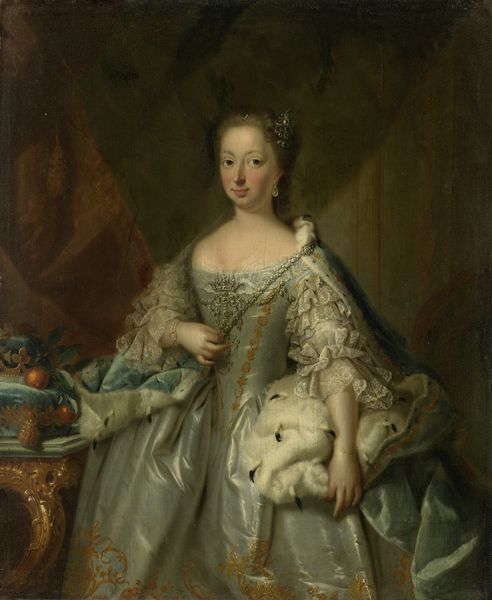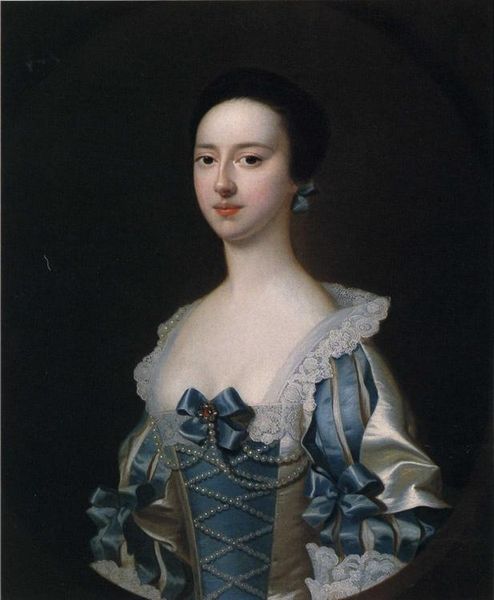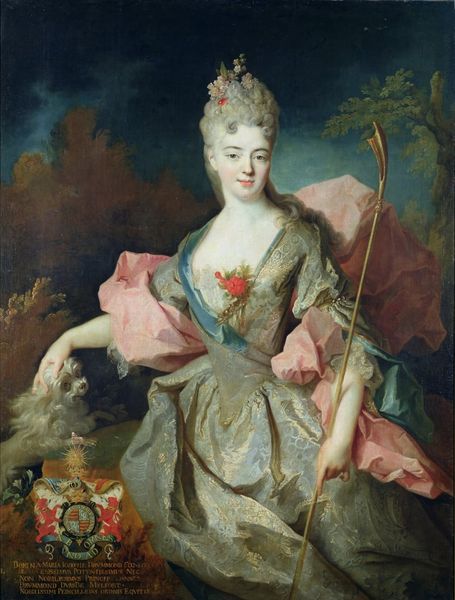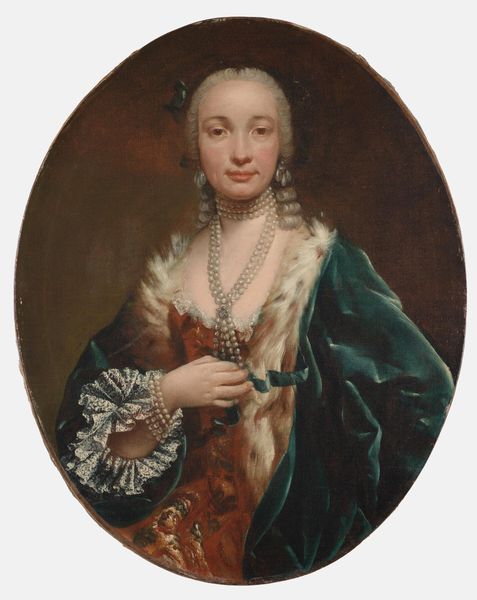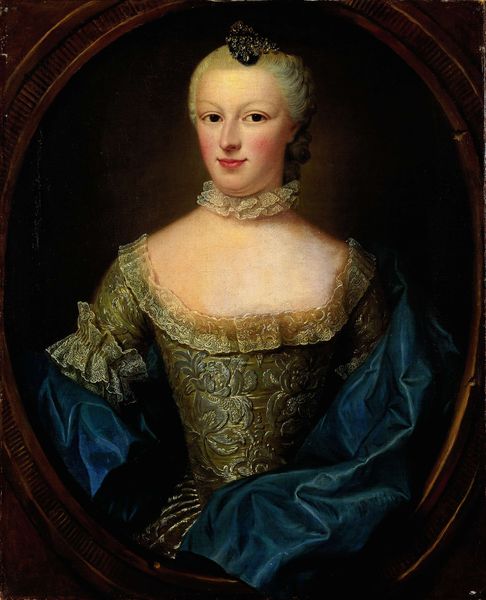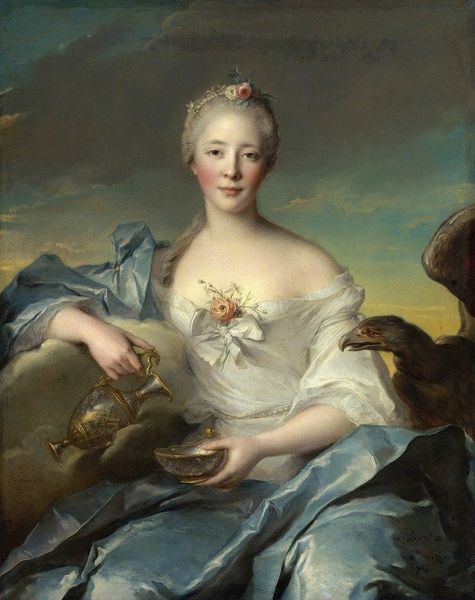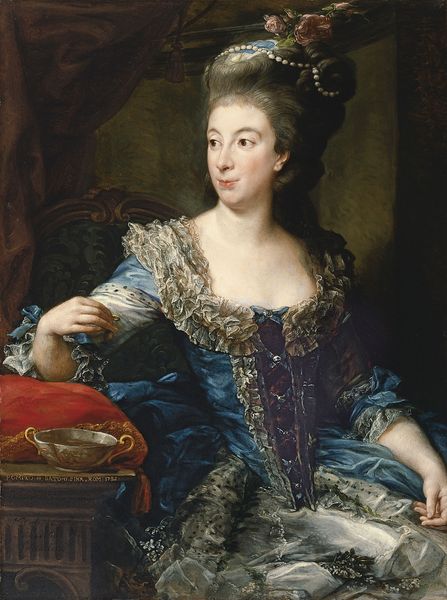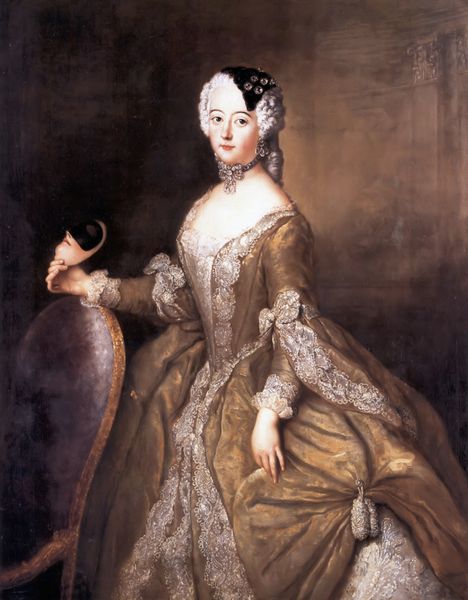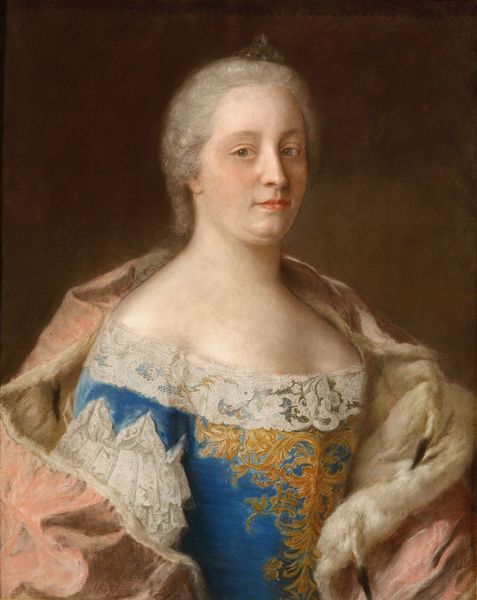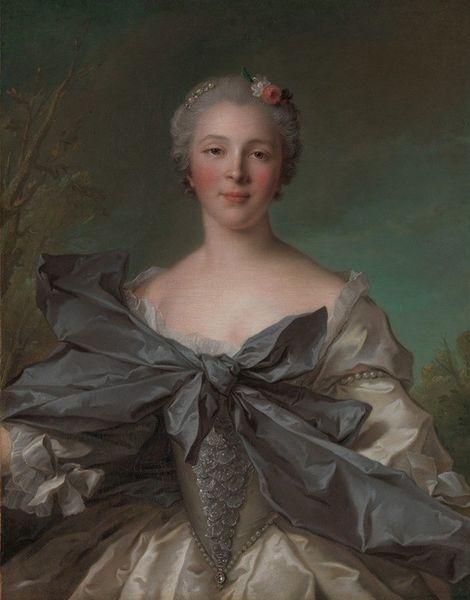
oil-paint, canvas
#
portrait
#
oil-paint
#
oil painting
#
canvas
#
underpainting
#
history-painting
#
portrait art
#
rococo
Dimensions: 44 cm (height) x 35 cm (width) (Netto)
Curator: Here we have Peter Wichmann's portrait of Juliane Marie, Frederik V's second queen, rendered in oil on canvas. It was completed sometime between 1721 and 1769. Editor: My first impression is a striking balance of soft light and meticulous detail. Her gaze is quite gentle, but her attire projects formidable status. Curator: Absolutely. The piece encapsulates the Rococo style with its emphasis on ornate details, particularly in the depiction of her gown and the lavish fur stole. The painting reveals how women’s power was displayed through visual symbolism of class, which becomes critical when we explore queenship’s function in the consolidation of state power. Editor: I see what you mean. The cascading jewels and elaborate lace function almost like armor. Tell me, what do the recurring floral motifs suggest? Curator: That's an interesting observation. Within this period, floral symbols are linked with concepts of beauty, but also the cyclical nature of life and time. It is worth examining whether or not such images of royal women legitimize the royal authority via this divine and inevitable power. Editor: It's interesting how those floral patterns, echoed in the tiara and embroidered on her dress, act as constant visual reminders. She’s wearing a kind of carefully constructed royal identity. But I am curious about the cool tones. What are your thoughts on how the artist plays with light and color to subtly convey her persona? Curator: That's a perceptive question. Rococo artists often used delicate palettes to enhance the subject's grace and beauty. But I also find it’s used in portraits like these to subtly distance the sitter from any connection to tangible, earthly matters and more to elevate them towards this symbolic representation. What do you feel is the impact for contemporary audiences seeing this piece? Editor: Well, I think it prompts reflection on the enduring power of symbols and how societies have historically constructed power. The symbolism definitely encourages viewers to decode meanings still circulating today, which offers insight into today's ongoing narratives concerning identity, status and visual language. Curator: I agree. Understanding this art not only illuminates the past but also the narratives we continue to weave.
Comments
No comments
Be the first to comment and join the conversation on the ultimate creative platform.
